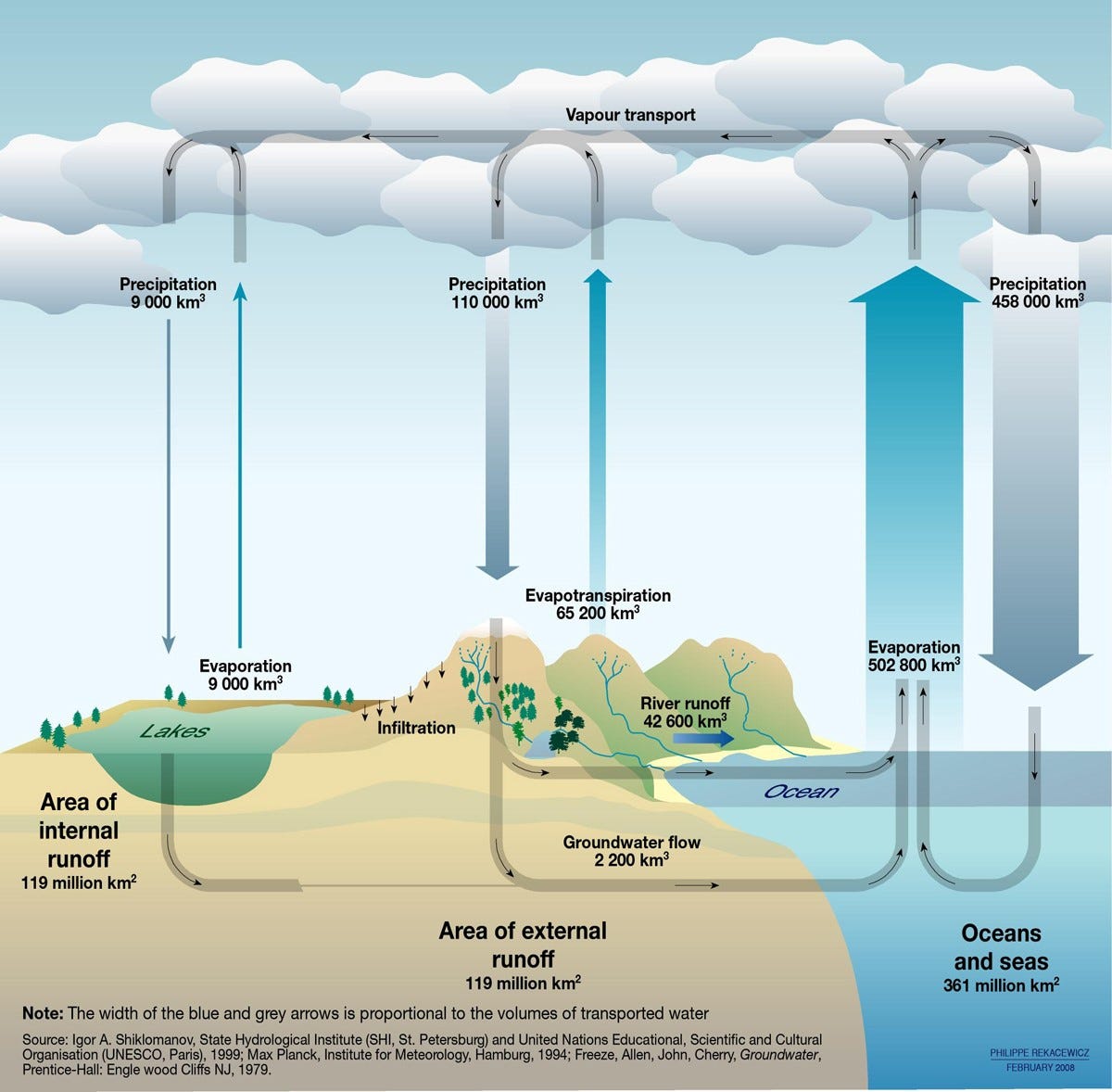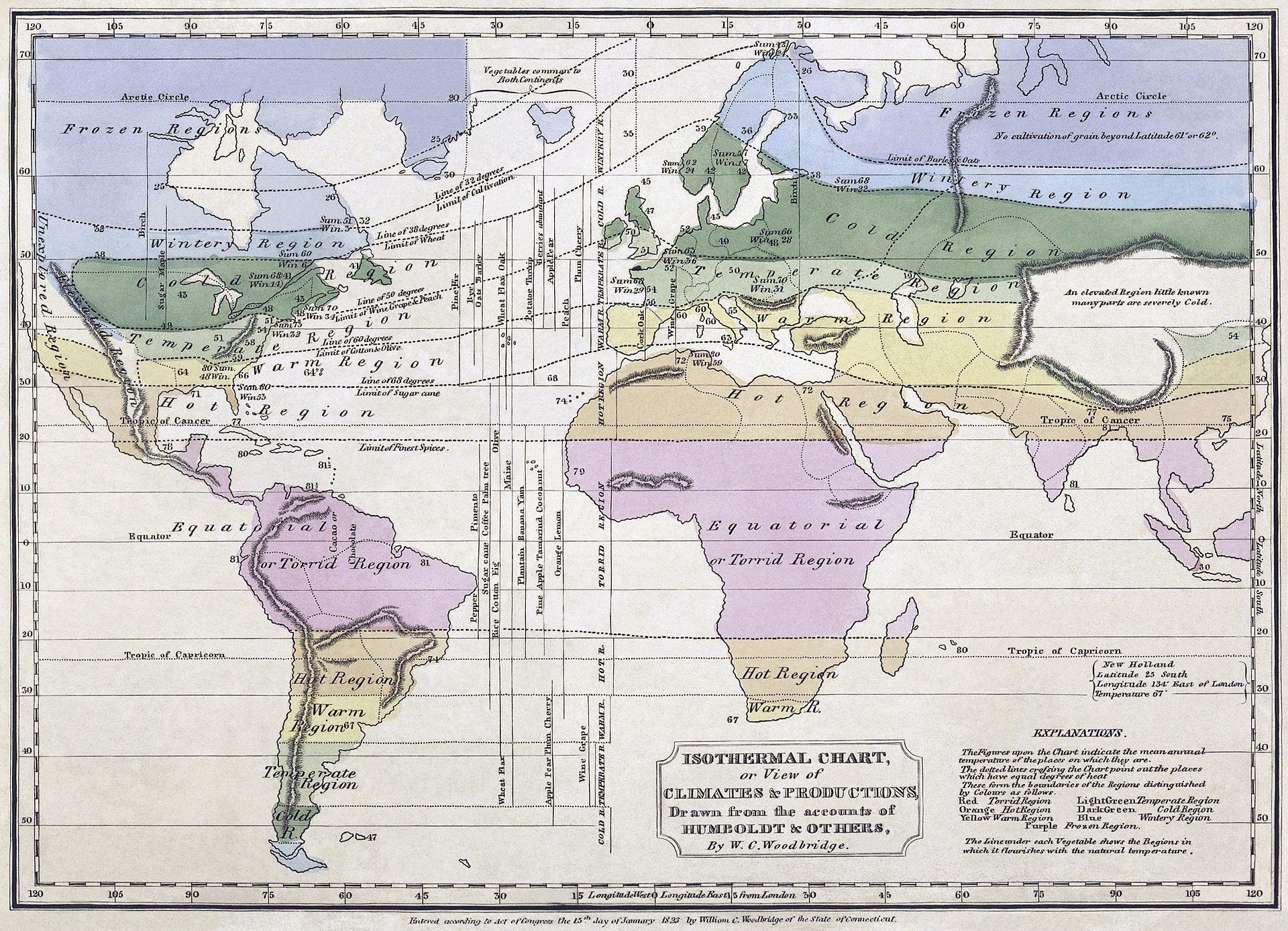Hello Interactors,
I recently read an intriguing article about unexpected forms of life thriving deep within the Earth's crust. These discoveries are revitalizing environmental theories and processes that mainstream science has long tried to dismiss—yet I've been exploring them over the past few summers. While working outside, I realized that some of these processes are unfolding right under my nose...and possibly even inside it!
On that note, this might sound a bit awkward, but...
Let’s dig in!
WORLDWIDE WEATHERING WHISPERS
I’m behind on my pressure washing. This can have detrimental effects here in the predominantly damp Northwest as moss spores, tiny lightweight travelers, are lifted and lofted by the wind’s wings until they land on damp concrete. A new home for moss to roam.
Upon contact, the spores absorb moisture and germinate, developing into a protonema — fine lines of sprawling verdant vines. As the structure crawls through the creviced concrete an anchored lace unfolds. Atop it grows a carpet of green and gold, down below tentacles grab hold.
The rhizoid roots anchor mounding moss, absorbing food and water nature has tossed. As the concrete crumbles into nutrient stores, the soft moss blossoms with chromophores. Over time, atop the luscious mountains and rocky moistened pours, the wind releases more lofting spores.

It turns out the contrasting boundary between soft squishy plants and hard concrete is as pronounced as the divisions between the disciplines of biology and geology. But advances in Earth System Science are starting blur these boundaries, as integrative science tends to do. Like moss softening concrete.
My expansive moss colonies, part of the plant kingdom, house communities of tiny microorganisms like bacteria, fungi, and microscopic animals like rotifers and tardigrades. Many of these communities have symbiotic relationships with moss. For example, some bacteria promote moss growth through the production of the plant growth hormone auxin using specific enzymes in plant tissues.
As the moss and its associated microbes grow and expand, they can penetrate small cracks or pores in the concrete, potentially widening them and exposing more surface area to weathering processes. This can be accelerated by certain bacteria and fungi that produce organic acids as metabolic byproducts. These acids can slowly dissolve or weaken calcium carbonate and other minerals found in concrete.
The biogeochemistry contributing to rock weathering and sediment formation reveals the intricate connections between biological processes and geological phenomena. At massive space and time scales they can not only affect the meteorological conditions above ground, but also the layers of sediment below ground.
In a recent New York Times piece, Ferris Jabr, author of “Becoming Earth: How Our Planet Came to Life” reveals how
“Within the forest floor [of the Amazon rainforest], vast symbiotic networks of plant roots and filamentous fungi pull water from the soil into trunks, stems and leaves. As the nearly 400 billion trees in the Amazon drink their fill, they release excess moisture, saturating the air with 20 billion tons of water vapor each day. At the same time, plants of all kinds secrete salts and emit bouquets of pungent gaseous compounds. Mushrooms, dainty as paper parasols or squat as door knobs, exhale plumes of spores. The wind sweeps bacteria, pollen grains and bits of leaves and bark into the atmosphere. The wet breath of the forest — peppered with microscopic life and organic residues — creates conditions that are highly conducive to rain. With so much water vapor in the air and so many minute particles on which the water can condense, clouds quickly form. In a typical year, the Amazon generates around half of its own rainfall.”1

Below ground, he describes work by Earth scientist Robert Hazen and colleagues.
“When Earth was young, microbes inhabiting the ocean crust were likely dissolving the basalt with acids and enzymes in order to obtain energy and nutrients, producing wet clay minerals. By lubricating the crust with those wet byproducts, the microbes may have accelerated the dissolution of both mantle and crust and their eventual transfiguration into new land.
The geophysicists Dennis Höning and Tilman Spohn have published similar ideas.
They point out that water trapped in subducting sediments escapes first, whereas water in the crust is typically expelled at greater depths. The thicker the sedimentary layer covering the crust, the more water makes it into the deep mantle, which ultimately enhances the production of granite.
In Earth’s earliest eons, micro-organisms and, later, fungi and plants dissolved and degraded rock at a rate much greater than what geological processes could accomplish on their own.
In doing so, they would have increased the amount of sediment deposited in deep ocean trenches, thereby cloaking subducting plates of ocean crust in thicker protective layers, flushing more water into the mantle and ultimately contributing to the creation of new land.”

LOVELOCKS LIVING LOOPS
This kind of Earth System Science has been given a name by one of first contributors, James Lovelock — geophysiology. Lovelock describes geophysiology as a systems approach to Earth sciences, viewing Earth as a self-regulating entity where biological, chemical, and physical processes interact to maintain conditions suitable for life. It integrates various scientific disciplines to understand and predict the behavior of Earth's systems, aiming to diagnose and prevent environmental issues by considering the planet as a cohesive, self-regulating system.
This concept, rooted in Lovelock’s initial Gaia hypothesis, emphasizes the feedback mechanisms that stabilize Earth's environment, akin to physiological processes in living organisms. Gaia is named after the primordial Greek goddess who personifies the Earth. This naming occurred in the context of Lovelock developing his ideas about Earth as a self-regulating system in the 1960s and early 1970s.
Lovelock had been working on methods to detect life on Mars at NASA's Jet Propulsion Laboratory, which led him to consider how life might be detected on a planetary scale. This work eventually evolved into his hypothesis about Earth functioning as a complex, self-regulating system maintained by the community of living organisms.
As Lovelock was formulating these ideas, he was looking for a suitable name for his hypothesis. It was during this time that William Golding, Lovelock’s neighbor and renowned author of "Lord of the Flies", suggested using the name "Gaia".
In Greek mythology, Gaia is considered the ancestral mother of all life and one of the first beings to emerge from earliest chaotic stages of Earth's formation. She is often depicted as a maternal, nurturing figure who gave birth to the Titans, the Cyclopes, and other primordial deities. Gaia is associated with fertility, the earth's abundance, and the cycle of life and death.

In ancient Greek religion, Gaia was worshipped as the Great Mother and was sometimes referred to as "Mother Earth." That title, and her influence, extends beyond Greek mythology, perpetuating the concept of Earth as a living, nurturing entity — a concept that has resonated in various cultures for Millenia.
Elements of the Greek notion of Gaia likely have roots in earlier Middle Eastern knowledge. Several ancient cultures had earth goddesses that predate or are contemporaneous with the Greek Gaia. For instance, in Mesopotamia, Sumerian mythology offers Ki is the earth goddess, and in Akkadian mythology, there is Ninhursag.

It turns out “Mother Earth” birthed similar concepts all around her. Egypt had Isis, Anatolia (modern-day Turkey) had Cybele, India’s Hinduism had Parvati and Durga, Pre-Columbian American cultures featured Pachamama, Celtic cultures had Danu and Brigid, while Norse mythology features Frigg and Freyja.
In 1960’s and 70’s America, “Mother Nature” and “Gaia” emerged among some environmentalists as New Age mystical beliefs associated with alternative spiritualities. Lovelock’s decision to use the word “Gaia” thus made him and his ideas a target among many Western trained scientists and his Earth system concepts endured harsh criticisms.
It’s worth mentioning that when Alexander Humboldt put forth similar ideas in his book "Cosmos" (first published in 1845), taking a holistic view of nature, exploring connections between various Earth systems and life forms, he was heralded as the greatest scientist of his time. Even Charles Darwin took a copy of Cosmos with him on his famous Beagle voyage. Humboldt, like Lovelock, uniquely and successfully integrated knowledge from diverse fields like astronomy, geology, biology, meteorology, and even art and literature.

But the specialization, reductionism, and quantification of dominant Western science distanced itself from these holistic approaches viewing them as too spiritual and outdated. By the twentieth century, the growing New Age interpretation of Gaia often personified the Earth as a conscious, living entity, drawing on both Lovelock's scientific hypothesis and ancient mythological concepts. Many modern religions and philosophical concepts about the origin of life still incorporate anthropomorphic elements, such as the idea of a creator with human-like qualities or intentions.
These mainstream images can lead to engrained tendencies to see humans and other living organisms as being born:
into a world as separate entities from the world they inhabit
onto a physical plane as a separate, tangible reality
unto which they individually acquire and consume energy to live and grow.
This perspective sees living beings as somewhat separate from their environment, rather than as integral parts of a larger system. It’s a view consistent with traditional Western science that emphasizes reductionist approaches, breaking systems down into component parts. But it contrasts with more holistic perspectives, such as those found in ecological theories like Geophysiology, other branches of Earth System Science, or Traditional Ecological Knowledge which see earth’s components, including humans, as inseparable parts of their environments.
This was confirmed at the 2001 Amsterdam Declaration, signed by the Chairs of the International Geosphere-Biosphere Program (IGBP), International Human Dimensions Program (IHDP), World Climate Research Program (WCRP) and DIVERSITAS at the 2001 ‘Challenges of a Changing Earth’ conference. The declaration concluded:
“The Earth System behaves as a single, self-regulating system comprised of physical, chemical, biological and human components, with complex interactions and feedbacks between the component parts.”2
Integrative Western scientists have now amassed enough data to recognize that living matter is born:
into a living, interconnected Earth system,
onto a dynamic web of relationships,
unto which we belong as integral participants, exchanging energy and matter in a continuous cycle of life and growth.
In this view, my moss colonies and their microbial companions emerge as vital threads, weaving together the living and non-living elements of our planet. These intricate communities, from the tiniest bacteria to the visible expanse of moss, exemplify the self-regulating nature of Earth's systems that Lovelock envisioned.
As they slowly transform concrete through their metabolic processes, they participate in the larger process of biogeochemical cycling. They influence not only my cinderblock walls and concrete surfaces, but they also contribute to the broader patterns of weathering, sedimentation, and even microclimate regulation.
This interplay between the microscopic and the global, the biological and the geological, embodies the essence of Humboldt’s and Lovelock’s theory — a planet alive with interconnected processes, where every organism, no matter how small, plays a role in maintaining the delicate balance of life.
In this living system, my moss and its microbiome, like me and the symbiotic communities of microorganisms in me and on me, are not mere passive inhabitants, but active agents in the ongoing story of Earth's evolution. Together we demonstrate the profound interconnectedness that defines our planet's unique capacity for self-regulation and adaptation.
Now where’s my pressure washer?
The Mysterious, Deep-Dwelling Microbes That Sculpt Our Planet. Ferris Jabr. New York Times. 2024.
Earth System Science. 1.2 Earth System Science. In Environmental Geology. Thompson Rivers University. 2024
Additional References:
Humboldt and the Young Explorers. Brad Weed. Interplace. 2022.












